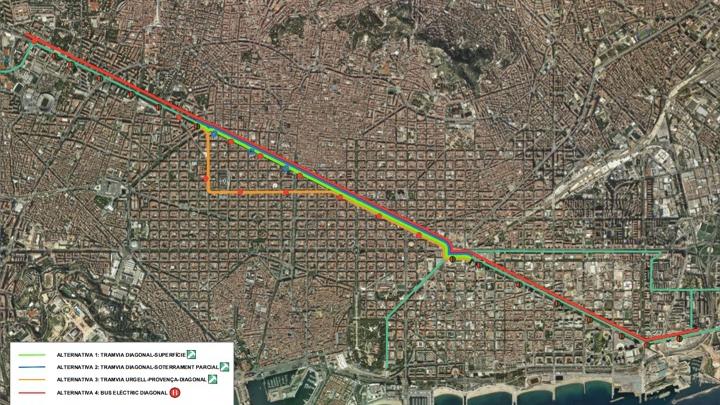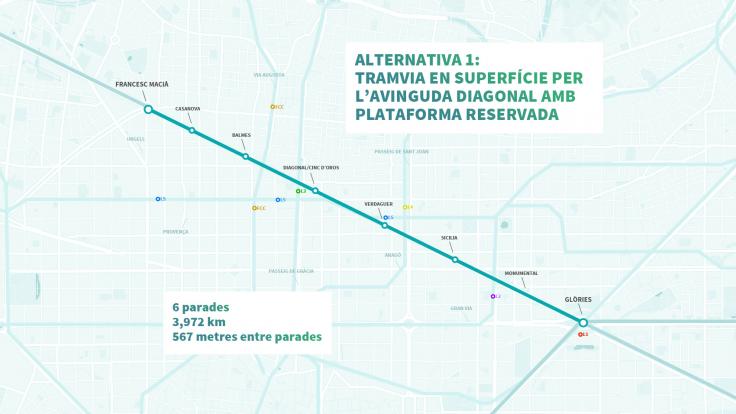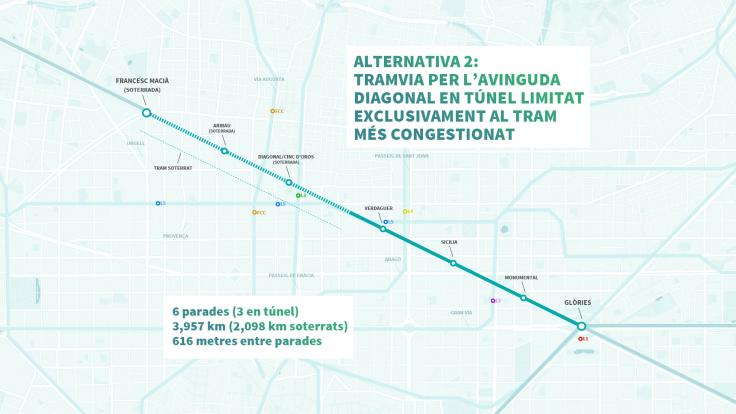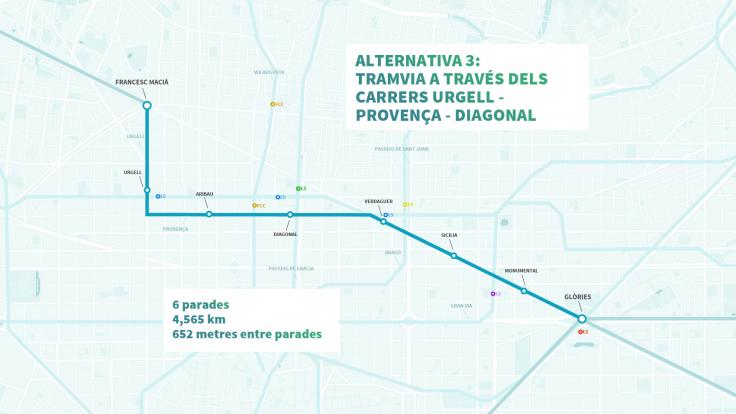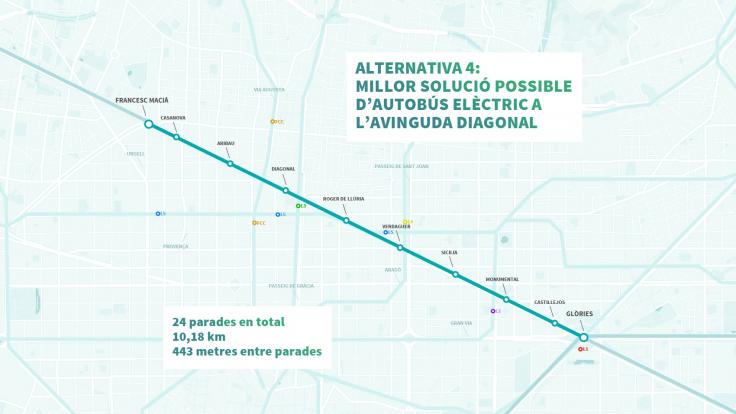Structure
The structure of the Information Study is as follows:
- Report:
- Analysis of Preliminary Studies.
- Analysis of the current planning.
- Additional analyses:
- Analysis of the New Bus Network.
- Analysis of the situation on Avinguda Diagonal.
- Summary, conclusions and selection of alternative options.
- Definition of the alternative options.
- Functional and economic evaluation of the alternative options.
- Cost/benefit analysis.
- Multi-criteria analysis.
- Annexes
- Maps
- Works budget
Analysis of the New Bus Network (NXB)
In the criteria for location, it is considered appropriate that the new tramway does not overlap with routes where the NXB has already incorporated new lines as a high-performance urban transport system. The new bus network (NXB) redesigns the Barcelona bus network according to user-friendliness, effectiveness and efficient resource management criteria. In relation to the Information Study:
- No high-performance line is envisaged on Avinguda Diagonal in Barcelona in the final NXB framework.
- The non-duplicity of high-performance urban transport line routes has been taken into account as a selection criterion because it is felt that tram routes that have a high level of coincidence with the new high-performance bus lines should be discarded.
Analysis of the situation of Avinguda Diagonal
Unlike other main city hubs, Avda Diagonal, between Francesc Macià and Glòries, is not equipped with a fast service or a medium or high capacity (tramway, metro or commuter train). The central section of Avda Diagonal is served exclusively by the bus service:
- With a bus lane that is not wide enough and is used by more than 46 buses/hour.
- At peak times during the day, the capacity of the bus lane is exceeded, causing serious problems of buses accumulating at the bus stops. This is known as the accordion effect, which massively slows down the commercial speed and noticeably reduces the quality of service.
The three alternatives along Avda Diagonal
Irrespective of the profile (above-ground or in a tunnel) and the mode (tramway or bus) the three alternatives running along Avda Diagonal coincide in:
- The selection criteria indicated in the Preliminary Studies:
- They do not overlap with the train or metro network.
- They have a simple geometric positioning and do not overly interfere with road transport or pedestrians.
- They do not involve peripheral routes that make a good quality service impossible for flows that start/end in the city centre.
- Coherence with the new bus network (NXB), which blends in perfectly with the new network and achieving efficient intermodal transport.
- To fulfil the goals of the current Planning:
- Achieve a good penetration of the current tramway networks in the centre.
- Reduce motorised vehicles (except in the case of the tunnel option).
- Renovate the fleet of vehicles from a technological point of view.
- Improve public transport services.
Regarding the first options to be considered, the Information Study contains the following:
- Tram Solution overground with reserved platform.
- Tram Solution in tunnel limited exclusively to the busiest section.
- Bus Solution that is more efficient and sustainable.
A fourth alternative
The study includes a fourth alternative along Urgell - Provença - Diagonal, with the following features:
- Relative proximity to Diagonal.
- Reduced impact on Provença street traffic, taking into account its current traffic-calming features.
- Minimal overlapping with the NXB lines.
The four alternatives finally analysed
An equally detailed analysis was made for each alternative: description, budget, quantitative evaluation (cost/benefit) and qualitative evaluation (multi-criteria). The alternatives studied were:
- Alternative 1: Tram overground along Avda Diagonal with reserved platform.
- Alternative 2: Tram along Avda Diagonal in tunnel limited exclusively to the busiest section.
- Alternative 3: Tram along Urgell - Provença - Diagonal.
- Alternative 4: Best possible solution for electric bus on Avda Diagonal.


